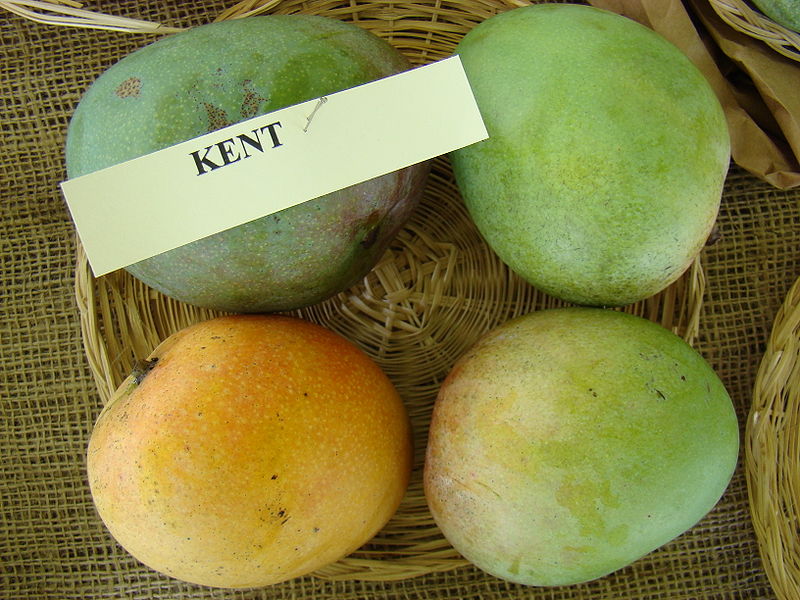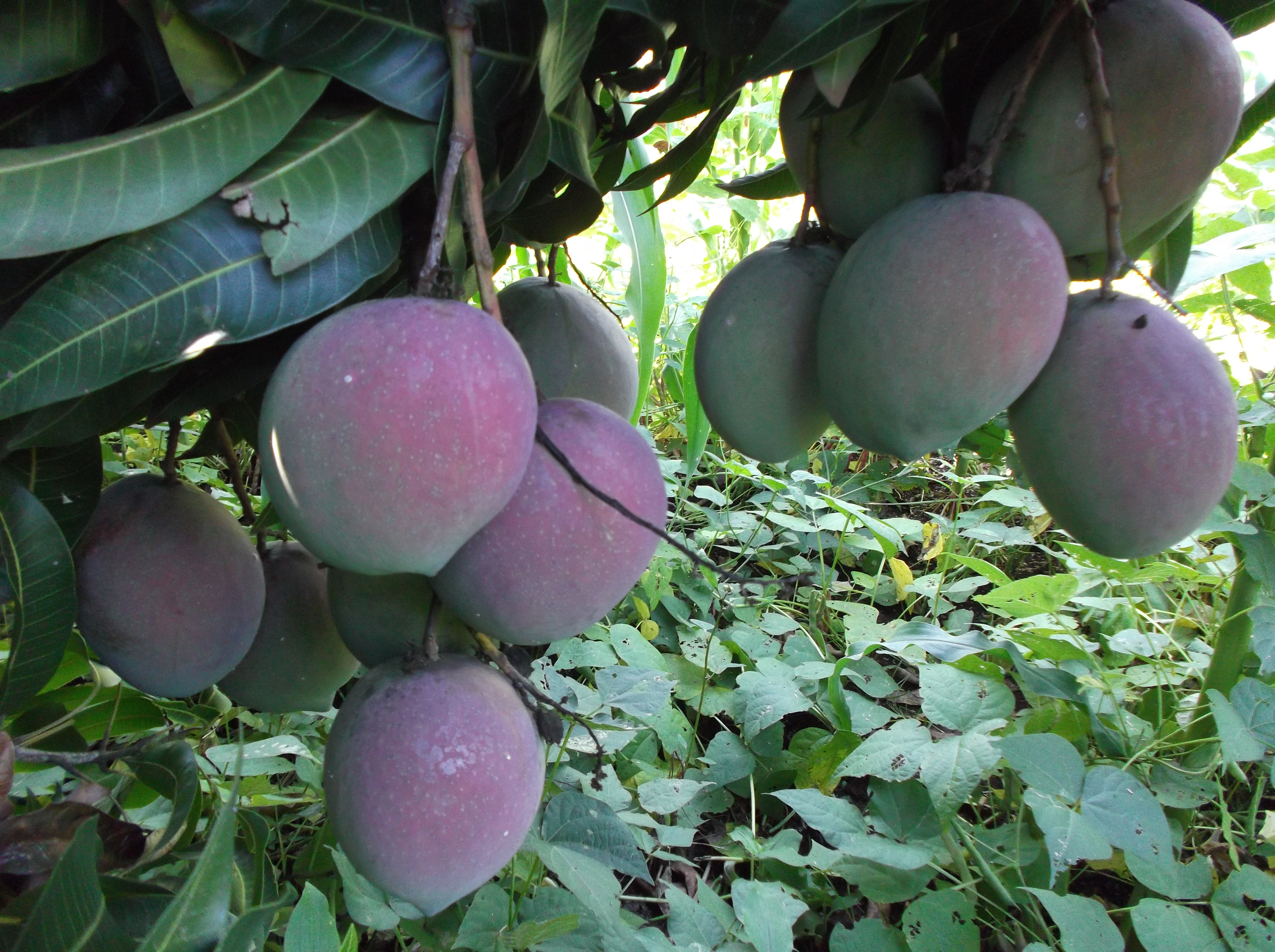Africa, with its diverse climates and rich agricultural history, has been a fertile ground for the cultivation of a wide variety of mango crops. Over time, farmers and agricultural scientists have developed numerous mango breeds, each with unique characteristics and adaptations to specific environmental conditions.
Mango Varieties Grown in Africa
While mangoes (Mangifera indica) are native to South Asia, they have been introduced to other parts of the world over centuries.
Africa is home to a wide variety of mango varieties which have been brought in from other tropical and subtropical regions around the world, but primarily from Asia.
These imported varieties have been selected for their unique characteristics, such as taste, size, color, and resistance to diseases, and have been adapted to the diverse climatic and soil conditions found across the African continent.
Some of the most popular mango varieties grown in Africa include the Tommy Atkins, Kent, Keitt, and Haden varieties, all of which originated in Florida, USA. These varieties are known for their sweet and juicy flesh, and are widely exported due to their long shelf life.
The Indian Alphonso mango, known as the "King of Mangoes", is another variety that is highly prized in Africa for its rich flavor and vibrant color.
Exotic mango varieties not only contribute to the diversity of the African mango industry, but also play a significant role in the continent's economy, providing income for millions of smallholder farmers and exporters.
Grafting for Improvement
Grafting has been a common practice in the development of new mango varieties of Africa. This technique involves joining a shoot or bud (the scion) of one mango variety to the rootstock of another. Grafting has allowed for the creation of varieties that combine the disease resistance of one type with the fruit quality or yield of another. An example of this is the 'Haden' variety, which was developed through grafting to improve its resistance to anthracnose, a common mango disease.
Hybridization for Disease Resistance
Hybridization, the process of crossing different mango varieties to create a new one, has also been instrumental in the development of disease-resistant mango crops in Africa. The 'Irwin' and 'Sensation' varieties are examples of hybrids that were developed to be resistant to powdery mildew, a fungal disease that can severely affect mango yield.
Modern Breeding Techniques
In recent years, modern breeding techniques have been employed to develop new mango varieties of Africa. These techniques, which include marker-assisted selection and genetic engineering, have allowed for the creation of varieties with specific desirable traits. For instance, the 'Zill' variety was developed using these techniques and is known for its exceptional resistance to mango malformation disease.
Varieties: A Deeper Dive
Dodo

The Dodo mango is a rare variety of mango that is grown in a few countries in Africa, including South Africa, Mozambique, and Zimbabwe. It is a large, oval-shaped fruit with a yellow skin and a sweet, juicy flesh. Dodo mangoes are typically harvested from late February to April.
Dodo mangoes are a relatively new variety of mango, and they are not as widely grown as other varieties. However, they are gaining popularity due to their delicious flavor and unique texture.
Interesting facts about Dodo mangoes:- The Dodo mango is a hybrid variety that was first developed in South Africa in the early 1900s.
- Dodo mangoes are a late-maturing variety, and they typically take about 12 months to reach maturity.
- Dodo mangoes are a high-yielding variety, and they can produce up to 100 fruits per tree.
- Dodo mangoes are a relatively easy variety to grow, and they are tolerant of a wide range of soil types and climates.
Kent

The Kent mango was named after its breeder, Leith D. Kent. It was reportedly a "chance" seedling from the Sandersha seedling (which some believe to have originated from the Brooks cultivar). The Kent variety was recognized for its outstanding flavor and relatively small seed, and it quickly gained popularity.
Over time, the Kent mango has been introduced to other mango-growing regions, including parts of Africa, where it's grown both for local consumption and for export. In these regions, the Kent variety is often favored for its resistance to the fungus that causes anthracnose, a common disease of mangoes. Kent mangoes are typically harvested from late December to March.
Kent mangoes are grown in a number of African countries, including Ghana, Ivory Coast, Kenya, and South Africa. They are a major export crop for these countries, and are shipped to markets all over the world.
Interesting facts about Kent mangoes:- The Kent mango is a hybrid variety that was first developed in Florida in the early 1900s.
- Kent mangoes are a late-maturing variety, and they typically take about 12 months to reach maturity.
- Kent mangoes are a high-yielding variety, and they can produce up to 100 fruits per tree.
- Kent mangoes are a relatively easy variety to grow, and they are tolerant of a wide range of soil types and climates.
Tommy Atkins

The Tommy Atkins mango is a popular variety of mango grown in Africa, especially in South Africa. It is a large, oval-shaped fruit with a yellow-orange skin and a sweet, juicy flesh. Tommy Atkins mangoes are typically harvested from late November to January.
Tommy Atkins mangoes are grown in a number of African countries, including South Africa, Kenya, and Mozambique. They are a major export crop for these countries, and are shipped to markets all over the world.
Interesting facts about Tommy Atkins mangoes:- The Tommy Atkins mango is a hybrid variety that was first developed in Florida in the early 1900s.
- Tommy Atkins mangoes are a late-maturing variety, and they typically take about 12 months to reach maturity.
- Tommy Atkins mangoes are a high-yielding variety, and they can produce up to 100 fruits per tree.
- Tommy Atkins mangoes are a relatively easy variety to grow, and they are tolerant of a wide range of soil types and climates.
- Tommy Atkins mango trees are also relatively resistant to pests and diseases, which makes them a good choice for commercial growers.
As a result of their popularity and hardiness, Tommy Atkins mangoes are one of the most widely grown mango varieties in the world.
Keitt

The Keitt mango is a popular variety of mango grown in Africa, especially in South Africa and Mozambique. It is a large, oval-shaped fruit with a green skin that turns yellow when ripe. Keitt mangoes have a sweet, juicy flesh with a hint of honey. They are typically harvested from February to April.
Keitt mangoes are grown in a number of African countries, including South Africa, Mozambique, Kenya, and Tanzania. They are a major export crop for these countries, and are shipped to markets all over the world.
Interesting facts about Keitt mangoes:- The Keitt mango is a hybrid variety that was first developed in Florida in the early 1900s.
- Keitt mangoes are a late-maturing variety, and they typically take about 12 months to reach maturity.
- Keitt mangoes are a high-yielding variety, and they can produce up to 100 fruits per tree.
- Keitt mangoes are a relatively easy variety to grow, and they are tolerant of a wide range of soil types and climates.
Keitt mango trees are also relatively resistant to pests and diseases, which makes them a good choice for commercial growers. As a result of their popularity and hardiness, Keitt mangoes are one of the most widely grown mango varieties in the world.
Keitt mangoes are a favorite among many people because they have a sweet, juicy flavor that is not too overpowering. They are also a good source of vitamins and minerals, making them a healthy choice for snacks or desserts.
Batawi
 The Batawi mango is a popular variety of mango grown in
Africa, especially in Kenya. It is a large, oval-shaped fruit with a yellow-orange
skin and a sweet, juicy flesh. Batawi mangoes are typically harvested from late
January to March.
The Batawi mango is a popular variety of mango grown in
Africa, especially in Kenya. It is a large, oval-shaped fruit with a yellow-orange
skin and a sweet, juicy flesh. Batawi mangoes are typically harvested from late
January to March.
Batawi mangoes are grown in a number of African countries, including Kenya, Tanzania, and Uganda. They are a major export crop for these countries, and are shipped to markets all over the world.
Batawi mangoes are a delicious and nutritious fruit that is a popular choice for both consumers and producers. They are a valuable crop for the African continent, and their production is expected to continue to grow in the years to come.
- The Batawi mango is a native of Indonesia, but it was introduced to Africa in the early 1900s.
- Batawi mangoes are a late-maturing variety, and they typically take about 12 months to reach maturity.
- Batawi mangoes are a high-yielding variety, and they can produce up to 100 fruits per tree.
- Batawi mangoes are a relatively easy variety to grow, and they are tolerant of a wide range of soil types and climates.
The development of mango varieties of Africa is a testament to the ingenuity and resilience of its farmers and scientists. Through traditional methods like grafting and hybridization, as well as modern breeding techniques, they have created a diverse array of mango crops that are well-adapted to the continent's varied climates and resistant to common diseases.
As we move forward, these efforts will continue to play a crucial role in ensuring the sustainability and productivity of Africa's mango industry.